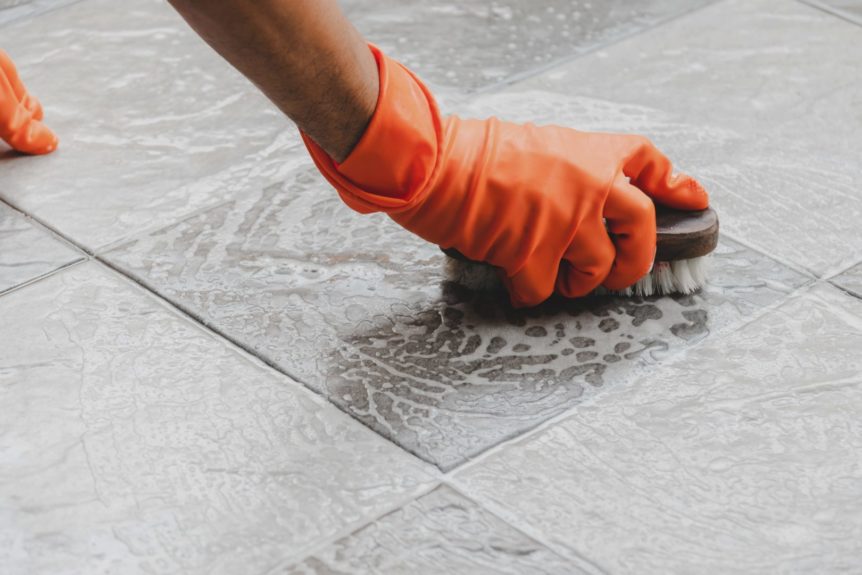
Easiest Ways to Clean Tile Floors
Tile floors are beautiful and can last a lifetime if properly cared for. This is great news because tile floors are quite easy to take care of. Warm water, soap or another floor cleaning product, and a chamois mop or rag is all you need to keep your tiles sparkling! It’s easy, yes, but there are still a few things you may want to take note of.
How Often Should You Clean Tile Floors?
Sweep or vacuum at least least twice a week to get rid of the various kinds of debris that may dull the finish if left unattended for too long. If you have tile floors in your kitchen, mop it twice a week; once a week if it’s in your bathroom. Finally, be sure to spot-clean the grout once every two to three months just to stay on top of it.
What Do You Need to Clean Tile Floors?
As mentioned before, not much! A basic list of cleaning tools for tile floors includes:
- Broom and dustpan (or vacuum)
- Rag or chamois mop
- All-purpose cleaner or dish soap
- Bucket
- Warm water
- Dry cloth
How Do You Clean Tile Floors?
Any type of cleaning product (all purpose, dish soap, white vinegar) can be used on ceramic and porcelain tiles, as they aren’t easily scratched and don’t quickly lose their shine. Simply sweep or vacuum the tile. A microfiber duster can also be used to pick up excess dust and pet hair easily. Next, fill the bucket with warm water and the cleaner you’ve chosen and begin mopping, making sure you get into the corners where dirt tends to pile up. Change the water as needed, usually depending on the size of your floor or how dirty it is. You can also use a steam mop.
To clean the grout, spray it with a cleaner specific for grout and let it sit for 5 minutes (or as long as the product’s instructions suggest) and rinse it off. Avoid using vinegar or peroxide on the grout, as the acid from these products will loosen it. Light grout can stain easily. If regular cleaning can’t get rid of the stain, try making a paste out of baking soda and. Let it sit for a few hours or overnight, scrubbing it afterwards with a nylon brush or a toothbrush. Once clean, you can always apply a silicone-based sealer to protect the grout more efficiently.
Finally, dry the floor with a clean cloth. Do so immediately if your floor is prone to forming water spots.
What If Your Tile Isn’t Ceramic or Porcelain?
Marble, slate, granite, vinyl, and linoleum tile floors can be cleaned in almost the same way as porcelain and ceramic tiles, but take note of a few differences:
Slate and marble tiles can’t handle acidic cleaners, such as vinegar. Granite tiles needs a pH-neutral or mild detergent to avoid discoloration. Natural stone tiles are more prone to scratching, so be sure to use a soft-bristled broom. Also, avoid acidic cleaners on stone tiles.
Vinyl and linoleum floors aren’t made to withstand high temperatures and moisture, so don’t use a steam mop on them. With vinyl specifically, don’t use abrasive cleaners as it can be easily scratched. Instead, use a cleaner specifically for vinyl or a mixture of water and vinegar.
After sweeping linoleum tiles, cleanse it with a solution that’s meant for linoleum flooring, or mix borax and water. Once a quarter or twice a year, be sure to apply a coat of wax and buff to maintain the floor’s shine.




